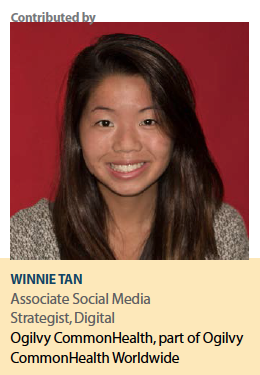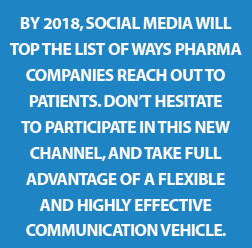 As the generation marketers have labeled “millennials" mature into their role as heads of family and healthcare consumers, how can modern pharmaceutical brands begin to build a relationship with them? For a generation that has come of age as digital and social media natives, how do we engage with millennials in their most comfortable zone?
As the generation marketers have labeled “millennials" mature into their role as heads of family and healthcare consumers, how can modern pharmaceutical brands begin to build a relationship with them? For a generation that has come of age as digital and social media natives, how do we engage with millennials in their most comfortable zone?
Concerns of pharmaceutical participation in social media lies with brand safety, and the lack of regulation in the space. However, the industry is slowly adjusting to the maturing social media market, as the platforms themselves are making their tweaks.
What was once a very intimidating proposition for pharmaceutical marketers now have several draft guidelines from the FDA. According to the most recent proposed guidelines (June 2014), a link to fair balance safety information is sufficient to support messaging in limited character market platforms.1 This has not yet been ratified by the FDA, but it does provide some perspective on where the FDA is heading in seeing social media as a viable pharmaceuticals marketing platform. This allows for safety information to be separate from benefit information, as long as the link to the risk and warnings is made available. The one-click rule allows and supports a consistently shared solution for pharma brands to promote themselves in social media. This opens up targeted promotion, and a construct for patient and professional engagement.
Previously, channels did not have a solution for presenting safety information within the text and photo limit of the post. However, Facebook ads now allow for scrolling ISI.2 This feature can accompany your branded claim within promoted posts. By combining FDA guidelines with Facebook’s offering, you have a compliant and effective promotional channel. While Twitter’s 140-character text limit hasn’t changed, the hyperlink approach to the ISI will meet the FDA guidelines. Twitter’s Ads Without Profiles service now allows you to reach your healthcare consumers without engagement actions such as retweets and replies — eliminating the need for maintaining a profile.3
Organic posts — those not promoted with paid placements for targeted users — were always a challenge for regulated industries. Many social networks identified an opportunity to support healthcare brands, and have begun offering solutions for brands requiring fair balance information.
When establishing brand profiles and posts on these platforms, engagement with the audience is key.
 Disabling comments may be the first answer to help alleviate adverse events in this space, but this doesn’t help promote the organic and engaging environment that the Millennial expects to find. Instagram’s new keyword moderation tool gives you the ability to block comments with “bad keywords" to be hidden from the audience — disassociating any negative sentiments from the brand.4 While we can use keywords for targeting, we can now also use them to hide what we deem as risky.
Disabling comments may be the first answer to help alleviate adverse events in this space, but this doesn’t help promote the organic and engaging environment that the Millennial expects to find. Instagram’s new keyword moderation tool gives you the ability to block comments with “bad keywords" to be hidden from the audience — disassociating any negative sentiments from the brand.4 While we can use keywords for targeting, we can now also use them to hide what we deem as risky.
Social Media: the Millennial Channel
Millennials are a very important audience, and social media is a significant way to get their attention. The channel not only fosters relationships and connections, but serves as a modern vehicle for communication, and commerce. Ninety percent of Millennials use social media, with a third saying it is the preferred channel for communicating with businesses.5
Uber and Dominos are examples of industries that have business models that are seamlessly connected to larger social networks such as Facebook, providing around-the-clock access to their brand. This is where pharma can engage consumers, and direct them to raise questions in the doctor’s office. By 2018, social media will top the list of ways pharma companies reach out to patients.6 Don’t hesitate to participate in this new channel, and take full advantage of a flexible and highly effective communication vehicle. (PV)
Editor’s Note:
1 http://www.fda.gov/downloads/Drugs/GuidanceComplianceRegulatoryInformation/Guidances/UCM401087.pdf
2 http://www.fiercepharma.com/marketing/bayer-s-first-facebook-ad-campaign-features-first-scrolling-isi-a-pharma-ad-facebook-ad
3 https://www.klick.com/health/wp-content/uploads/2016/11/twitter-ads-without-profile.pdf
4 http://blog.instagram.com/post/150312324357/ 160912-news
5 http://www.pewinternet.org/2015/10/08/social-networking-usage-2005-2015/
6 http://pharmafuture.org/pdf/The-Digital-Pharma-Marketer-2016.pdf
Ogilvy CommonHealth Worldwide — the health behavior specialists of Ogilvy & Mather — is committed to creativity and effectiveness in healthcare communications, everywhere.
For more information, visit ogilvychww.com.










